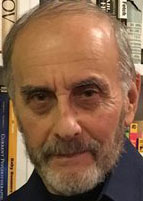Starr: I raise this question because I've noticed that photographers are selling licenses for photographs they've taken of public domain artworks -- and sometimes even for works that are still in copyright.
Sprigman: Some of these photographers might claim that their photos of public domain paintings go beyond slavish reproductions but that could be difficult to sustain. Or these photographers may not know the law. Others may just be plain brash. In my discussions with photographers I have found that they don't know about Bridgeman vs. Corel and they believe, " Well, I have taken a photograph and I'm going to claim copyright of it and demand that people license it." They just don't know
Starr: Since the Bridgeman decision the art industry has apparently avoided mounting lawsuits against those who use photos of public domain paintings without paying fees for them or obtaining a license based on someone's claim or implication of copyright ownership. Commentators have said that the Bridgeman decision was so decisive that the art industry doesn't want to risk further attention to the issue or the possibility of broader sanctions and restrictions.
Sprigman: Not surprising, since the Bridgeman decision is correct. The U.S. copyright law says that to be copyrighted a work must be original. If you just take a photo of a public domain painting that has no additional element to it, it's not original; it's just a reproduction and you don't get a copyright in a public domain work simply by reproducing it. In fact, if Congress tried to grant copyright to a flat "slavish" reproduction it would be a violation of the Constitution. The Constitution says that copyright can only be given to authors not to people who merely make a reproduction.
Starr: Has Congress tried to pass legislation like that?
Sprigman: There have been discussions but nothing has come to a vote. But there was a Supreme Court decision a while back in a case, Feist, that involved the question of whether you could have copyright of the White Pages of the telephone directory. The court ruled that you can't because there is nothing original about the directory -- it's just an alphabetical list of names. It's not an original work of authorship. There have been attempts to get copyright protection for data bases of facts that are not original works of authorship, and those attempts have been defeated.
Starr: What does the public domain designation allow you to do with a photographic reproduction of a painting?
Sprigman: If you take a photo of a public domain painting then you own the photo and can do whatever you wish with it -- use it in an article, book, display it, etc.
Starr: Museums and other institutions that offer licenses for photos of public domain artworks sometimes provide higher resolution images than what is available in their catalogues or online.
Sprigman: Still, if it's a slavish or just a sharper reproduction of the image it would not qualify as original and would be in the public domain. But if someone is willing to pay for that it's their choice, or they just don't know the law pertaining to slavish reproductions.
Starr: It's not only museums that are selling licenses for images of public domain artworks. If you Google almost any public domain painting you will find many sites and individuals implying or claiming a copyright on their reproduction photos and asking for licensing fees, or saying that you can't use the photos without their permission. That would seem analogous to people claiming they have the deed to the Brooklyn Bridge and then setting up toll booths -- with the public willingly paying the tolls, or choosing the booth with the lowest toll. At best this is an extremely confusing situation for authors and publishers.
Sprigman: This is a great example of something that
I've often noticed. Congress makes a copyright law, but the law on the
street is often quite different from the law on the books. People make
claims that they own things that they don't own because in some
instances copyright doesn't have completely clear rules about who owns
what. In an environment where there is not a lot of clarity there are a
lot of weird claims. You should read Jason Mazzone's book, Copy Fraud and Other Abuses of Intellectual Property Law.
He gives examples like people claiming copyright in the U.S.
Constitution. The Constitution is in the public domain. People claim
copyright ownership of Shakespeare's sonnets. It's just insane. The
lack of explicit clarity encourages this kind of behavior -- it makes
this kind of behavior profitable and to some extent that's what some
institutions are doing with public domain images
.
Starr: When I've asked permissions people and editors
if it's necessary to get a license for a photo of a public domain
artwork they say it's a gray area and if you don't want to get sued
you'd better pay for a license.
Sprigman: It's not a gray area. If they make an unadorned photo of the public domain image, that photo can't be copyrighted -- period! What I understand is that institutions want to preserve every possible source of revenue. Government funding is going down -- they're under pressure.
Starr: What about the use of hyperlinks to a photo or image of public domain works, and for images that are still under copyright.
Sprigman: That's less and less of a gray area. Recently, courts in the U.S. have said that you can't be held liable for copyright infringement just by providing hyperlinks to public domain or other material. But it may be different in other countries.
Starr: Can museums or other institutions and photographers sue if you use their "slavish" images of public domain artwork?
(Note: You can view every article as one long page if you sign up as an Advocate Member, or higher).





